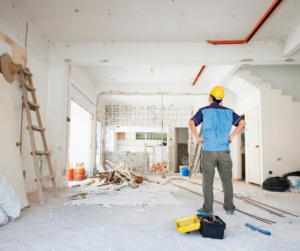When your home’s windows show signs of damage, rot or mold, it may be time for Maryland Window Replacement. But how much will it cost?

Start by reviewing your budget. Then consider frame material and style. For example, fiberglass frames are more durable than vinyl. They also offer higher energy efficiency than either wood or aluminum-clad vinyl.
There is a wide range of costs associated with Window Replacement. The type of window, frame material and energy efficiency are some of the factors that will impact the total cost. Regardless of the type of window that you choose, it is important to set a budget for your project and stick with it. This will help to prevent unexpected expenses down the road. In addition, it is a good idea to get multiple estimates from contractors before making any final decisions. This will allow you to compare prices and quality and make the best choice for your home.
The number of windows that you need to replace will also impact the overall cost. If you only need to replace one or two windows, the cost will be much lower than if you need to replace all of the windows in your home. Additionally, it is generally cheaper to replace all of the windows in your home at once, rather than replacing them individually over time.
Whether or not you need to do a full-frame Window Replacement will also have a big impact on the cost. This process involves removing the entire existing window trim and frame. This type of installation is typically required if the existing window frame is damaged or rotted.
If the existing window frame and trim are in good condition, a pocket replacement may be sufficient. This type of installation involves removing the window sash and installing a new window into the existing frame. A new “sash pack” is then installed, which includes the upper and lower window sash. This type of replacement is recommended by Consumer Reports for older homes.
Energy efficient windows can significantly reduce your utility bills. However, it is important to note that more heat enters and escapes through the attic floor, recessed lighting, fireplaces, doors and other penetrations in your home’s envelope than from the windows alone. Depending on your situation, it may be more cost effective to invest in additional insulation and weather stripping before investing in energy efficient replacement windows.
Energy Efficiency
Many homeowners decide to replace their old windows with new energy efficient models in an attempt to save on their energy bills. They often find themselves disappointed, because although new windows will make a difference on their heating costs, they won’t pay for themselves in energy savings.
The energy efficiency of your home is determined by the amount of insulation in your walls, attic and ceiling as well as the seals around the penetration points of the building envelope such as ducts, vents, fireplaces, recessed lights and windows. Windows can be a significant source of heat loss and air leakage, but with the right selection and installation techniques, you can significantly reduce your energy consumption and lower your utility bills.
When selecting replacement windows, you should carefully consider their appearance from both inside and outside the home, the amount of light they should let in, and how easy they will be to open and close. In addition, you should look for window rebates as these can significantly offset the initial investment cost of your new windows.
If you are looking for a high-efficiency solution, consider purchasing insulated double-pane windows with Low-E glass and argon or krypton gas filled between the panes. These windows will allow heat to enter the home during colder months and reflect the sun’s heat away from the home during summer, significantly decreasing your utility bill.
One claim that some window retailers and local installation companies make is that your new windows will quickly pay for themselves in savings on your energy bills. While this is true in some cases, the type of windows you purchase and the extent to which they are installed will determine how long it takes for your new windows to recoup their cost.
According to Wasielewski, it would take 70 years for most replacement windows to pay for themselves in energy savings assuming the average household energy costs are equal in both winter and summer. This is a long time and well beyond the warranty period of most replacement windows as well as their practical life expectancy.
Style
When you decide to replace a window, you must determine the style you want for your home. The type of replacement you choose will influence the price and energy efficiency of your home. There are several different types of windows and some may require a special order. For example, specialty sizes and shaped windows can take up to 12 weeks to arrive from the manufacturer. However, standard windows like casements or double hung windows are usually available quickly.
The first step is to determine the size of the replacement window, which is known as the rough opening measurement. This measurement is taken from the framed area where the window will be installed. It is important to use the exact measurements of the framed opening when ordering a new window because it will help ensure proper installation and prevent air and water leaks.
Once the rough opening measurements are determined, homeowners can start selecting a window style. The most popular styles include single-hung windows and double-hung windows. Both have a lower sash that moves up and a stationary upper sash. These windows offer great ventilation and can easily be cleaned from the inside of your home. They also provide a good opportunity to maximize natural light.
Another option is a sliding window. These are simple and easy to operate. They work well in most homes and come in a wide variety of materials. However, if you are looking for a window that offers more privacy or protection from the elements you might consider a fixed window instead. Fixed windows can be made of wood or vinyl and are often found in older homes.
Finally, homeowners who are looking to make a unique statement with their window selection should consider bay and bow windows. These are combinations of three or more windows joined at an angle that jut out beyond the walls. These windows can add a lot of character and curb appeal to your home.
Another type of replacement window is called a “block fit.” This type does not have a nail fin, brick mold or flush flange and simply sits in the existing frame. This is a good choice for older homes with wood frames and is especially useful when the original frames are rotting or damaged. This type of replacement window is not as durable as a full-frame window but can be an excellent option for budget conscious homeowners.
Installation
Changing out your old windows will not only improve the appearance of your home, but it will also boost its energy efficiency. However, as with any remodeling project, there is a certain amount of work involved. Before the installation team arrives, you will need to clear a path through which they can work and move any furniture or other items out of the way. In addition, if you plan to save the old windows, make arrangements for them to be moved outside or tucked away safely.
Window replacement contractors should accurately measure and prepare the window opening before installing the new window unit. This will ensure a good fit and minimize the amount of damage done to the surrounding wall or trim. Before removing the old window, they should carefully inspect and remove any rotting wood or water damage around the frame. They will also test the operation of the window and replace any damaged components.
In some cases, the installers will install the new windows from the inside of the house, which can be less disruptive to your daily routine. This method involves removing the interior casing and trim to access the existing window unit. The installers will then fasten the new window to the existing jambs and sash. If needed, they will shim the window to correct any gaps between the frame and casing. Gaps less than 1/4 inch wide can be filled with elastomeric caulk; larger gaps must first be stuffed with low-expansion foam insulation.
A full frame window replacement is a more involved process, as the entire existing window unit is removed down to the studs. This method is generally used when there is considerable damage to the existing window frames or sash. It can also be used to upgrade a smaller existing window to a larger size or change the style of the existing windows.
A retrofit installation is a less expensive option that allows you to replace the window sash without removing the existing frame and casing. It is ideal for restoring older homes and addressing problems with current windows that are not functioning properly.








